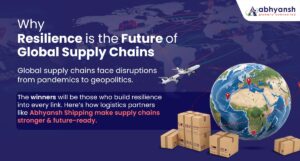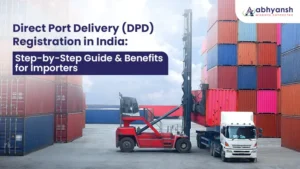Conflicts between nations have far-reaching implications, often extending well beyond the battlefield. One of the most immediate and critical sectors impacted by geopolitical tension- especially a war is logistics. In the case of a potential or actual conflict between India & Pakistan, the ripple effects on the logistics and supply chain ecosystem can be severe. This blog explores how war between these two neighboring nations disrupts the flow of goods, increases operational challenges, and alters international trade dynamics.
Disrupted Cross-Border Trade Routes
India and Pakistan, sharing a 3,323-kilometre-long border, have long relied on specific trade corridors to facilitate bilateral exchange of goods. In the event of war, these trade routes are typically shut down or severely restricted.
This leads to:
- Complete stoppage of direct trade via the Wagah-Attari border, the most active land crossing between the two nations.
- Disruption of road and rail freight movements, especially for agricultural goods, textiles, and raw materials.
- Increased pressure on ports and alternative routes, leading to congestion and delays.
For logistics companies, this means re-routing freight, incurring higher transit costs, and facing longer delivery cycles—all of which can weaken service reliability and customer trust.
Air and Sea Freight Reconfigurations
Conflict often leads to the closure of airspace and restricted maritime zones, forcing air cargo operators and shipping companies to modify their flight paths and sea routes. During escalations, both India and Pakistan have historically suspended aviation routes over shared airspace. This leads to:
- Increased fuel costs and flight time for international air freight carriers.
- Re-routing of sea vessels to avoid the Arabian Sea tension zones.
- Disruption of global shipping schedules, especially for time-sensitive cargo like pharmaceuticals, perishables, and electronics.
Such disruptions trickle down to manufacturers, exporters, and end consumers—causing delays and economic losses on a regional and global scale.
Increased Insurance Premiums and Risk Management Costs
When a conflict zone emerges, cargo insurance premiums escalate significantly. Freight moving in and out of conflict-affected regions is perceived as high risk. As a result:
- Logistics companies are forced to factor in war-risk surcharges.
- Small exporters and importers face difficulty in securing cost-effective insurance cover.
- Warehousing near border regions becomes vulnerable and less desirable.
This elevated risk perception pushes logistics firms to invest more in contingency planning, surveillance, and alternative supply chains, increasing overhead costs.
Border-State Supply Chain Disruptions
Bordering states such as Punjab, Rajasthan, and Jammu & Kashmir, which are integral to India’s agribusiness and industrial sectors, experience severe disruptions. These include:
- Delay in raw material movement and finished goods transportation.
- Impact on warehousing, last-mile delivery, and inter-state cargo due to increased military presence and roadblocks.
- Short-term supply shortages and inventory mismanagement across verticals like FMCG, auto, and pharmaceuticals.
This creates a cascading effect on national logistics networks, requiring robust real-time visibility and agile re-routing strategies.
Conclusion: A Wake-Up Call for Resilient Supply Chains
While the cost of war is often measured in human and economic terms, the logistics industry becomes a silent casualty, facing immense challenges in maintaining flow, connectivity, and continuity. For India, a country aiming to be a global logistics hub, such conflicts reinforce the urgent need for:
- Diversified trade corridors
- Investment in resilient infrastructure
- Digitized, real-time freight visibility systems
- Cross-border logistics cooperation agreements with alternative partners
In the face of geopolitical instability, logistics resilience is not just a strategy—it’s a necessity. As history has shown, preparedness can turn disruption into opportunity, and adaptability can define industry leadership.






